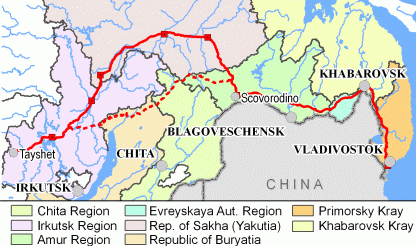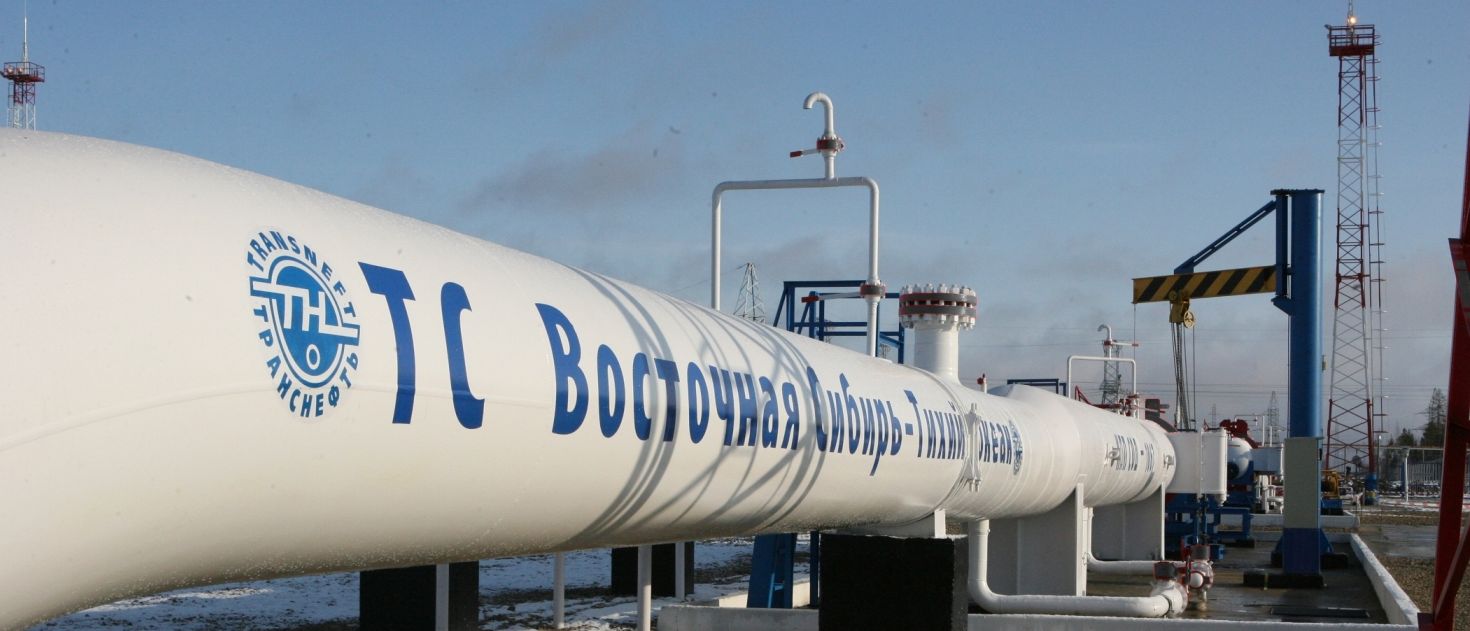Projects list
East Siberia – Pacific Ocean Pipeline System (ESPO)
The pipeline system from Eastern Siberia to the Pacific coast (known as ESPO) was designed to deliver the crude of the Siberian fields to the vibrant Asian-Pacific market.
The resource base of the Siberian crude that the pipeline is to deliver consists of a Western zone (Tomsk region and Khanty-Mansi Autonomous Okrug) and an Eastern one (Irkutsk region and the Republic of Sakha – Yakutia).
The project pipeline starts at the western boundary of Irkutsk region and goes eastward crossing the republics of Buryatia and Sakha, the regions of Chita and Amur, Evreyskaya autonomous region and two krays – the regions of Khabarovsky and Primorsky in the Far East.
This makes a total length of about 4,700 km.

2004. Developing the Environmental Impact Assessment (EIA) as part of the investment feasibility study for the project of construction of the oil pipeline system from Eastern Siberia to the Pacific Coast.
2005. Organizing desktop and field environmental studies and providing the associated methodological guidance as part of the work required for the development of the Environmental Protection section for the pipeline project of VSTO (Eastern Siberia to Pacific Coast).
2005. Developing the Environmental Protection section for the project of the oil pipeline system from Eastern Siberia to the Pacific Coast of Russia.
2006. Organizing desktop and field environmental studies and providing the associated methodological guidance as part of the work required for the development of the Environmental Protection section for the pipeline expansion project of VSTO (Eastern Siberia to Pacific Coast).
2006. Developing the Environmental Protection section for the project (TEOC) of an expansion of the oil pipeline system from Eastern Siberia to the Pacific Coast of Russia.
The effort included development of Sanitary Protection Zone, Maximum Permissible Discharge and Maximum Permissible Emission reports for individual facilities associated with the pipeline.
